6 Different Types of Spiders in North America
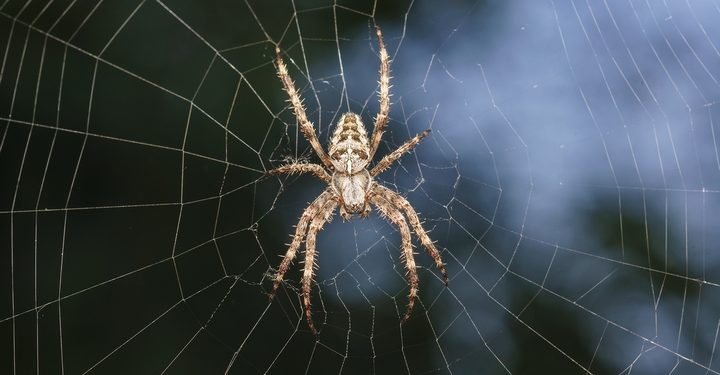
You have to agree that the sight of a spider in your home is quite unsettling. If you leave the spiders undisturbed for too long, it could lead to a major pest outbreak that will infest your house. Out of the 35,000 spider species in the world, North America has 3,000 different types of spiders.
Here are six types of spiders to watch out for in North America:
1. Brown Recluse Spiders
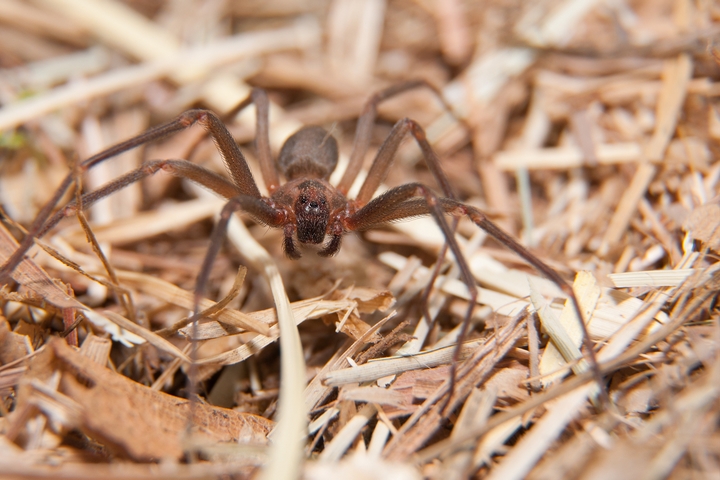
This spider is highly poisonous. It is found under the recluse family of spiders. A brown recluse spider has a body length of about a ¼ or ¾ inches. The brown recluse spider is distinct from other spiders for its dark violin-like shape usually found at the top of the leg attachment. The neck of the ‘violin’ can be seen pointing to the abdomen.
Another unique feature of this recluse spider is that while other spiders have 8 eyes, this one has only six, which are arranged in pairs; one pair at the front and the other two on the sides. The venom of a brown recluse spider causes necrosis and cutaneous injury with tissue loss. Although this spider is not aggressive by nature, it attacks when threatened.
2. Black Widow Spiders
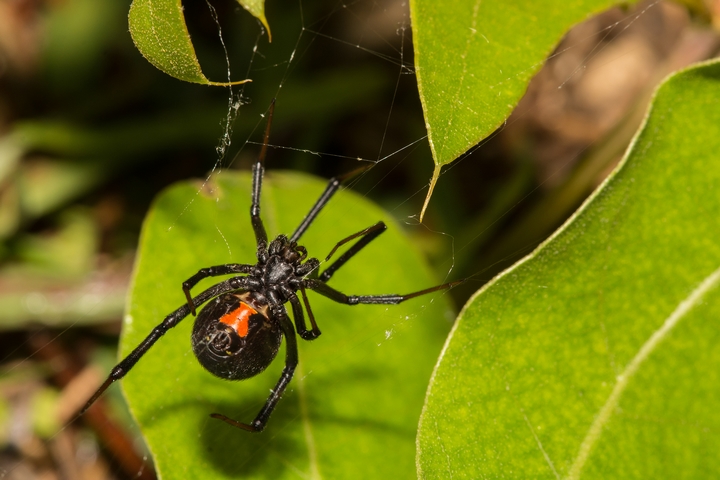
A black widow spider’s body length can measure up to 1.2 cm. It is shiny black and has an orange or red hourglass-like shape on the underside of its abdomen, which is usually orange in colour. Black widow spiders like to stay in areas that provide them with some form of shelter. You are likely to find them residing in rubble piles, wood piles, hollow stumps, and under stones.
The venom of a black widow spider is one of the most poisonous in the world. Its bite can be excruciatingly painful and sometimes even fatal, especially for the young and the elderly. This spider does not need to use large amounts of its venom to cause fatalities. Its neurotoxic poison is actually fifteen times more powerful than the venom of a prairie rattlesnake.
The venom targets the body’s nervous system and usually results in vomiting, headache, nausea, pyrexia, hypertension, and abdominal pain. With the help of an effective antivenin invented in 1956, only less than 1% of individuals bitten by a black widow spider are at risk of dying.
3. Hobo Spiders
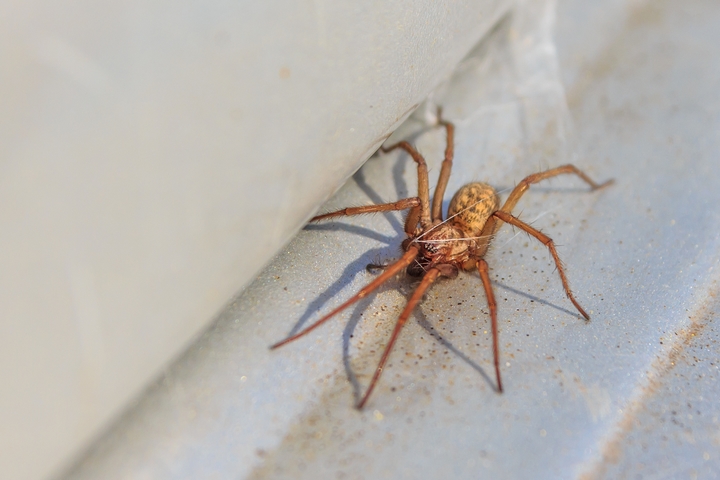
A hobo spider belongs in the Agelenidae family of spiders. It prefers to reside in dry and arid environments. A hobo spider is brown in colour and has a body length of 1/3 to 2/3 inches. Its legs can reach up to 2 inches. Unique features include chevron-shaped markings found on its abdomen. The males have two relatively large palpi that resemble boxing gloves. Females usually have larger abdomens than males. A hobo spider likes to reside in human structures, but it’s hard to find them climbing vertical surfaces or above ground level.
This spider likes to build its web horizontally. The web then retreats into a hole, woodpile or into a crack in the wall. They hide in these webbed holes as they wait for their prey. Hobo spiders are very aggressive and can bite with minimal provocation. Although the bite, can be painless at first, it can turn into something serious. The effects of a hobo spider’s bite are severe headaches that can last up to seven days, fatigue, nausea, malaise, vision impairment, and temporary memory loss. If bitten by this spider, quickly seek medical attention.
4. Yellow Sac Spiders
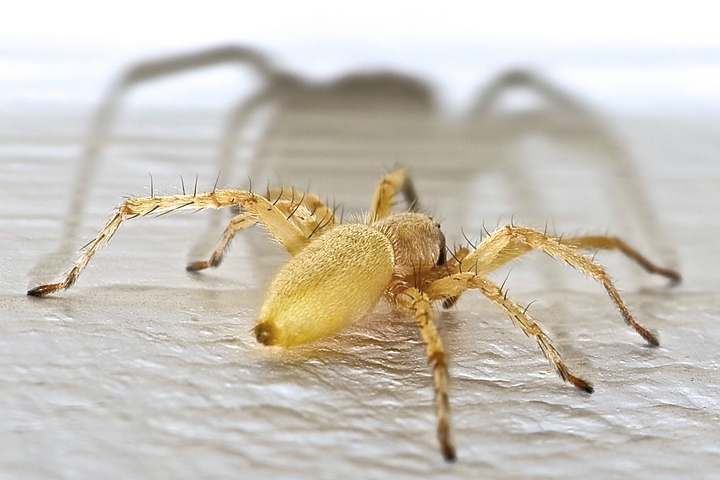
This spider is also known as the black-footed spider. It is medium in size and has a body length of about 6-10 mm. What stands out with this spider is its pale yellow or green colour. In rare cases, it is not uncommon to come across a pinkish one. Its fangs are located in a black structure.
Interestingly, its body colour changes to correspond with that of the prey it recently ate. These spiders are mostly found in homes and build their retreats in crevices or leaves. In most cases, bites from this spider occur at night since they are nocturnal hunters.
5. Wolf Spiders
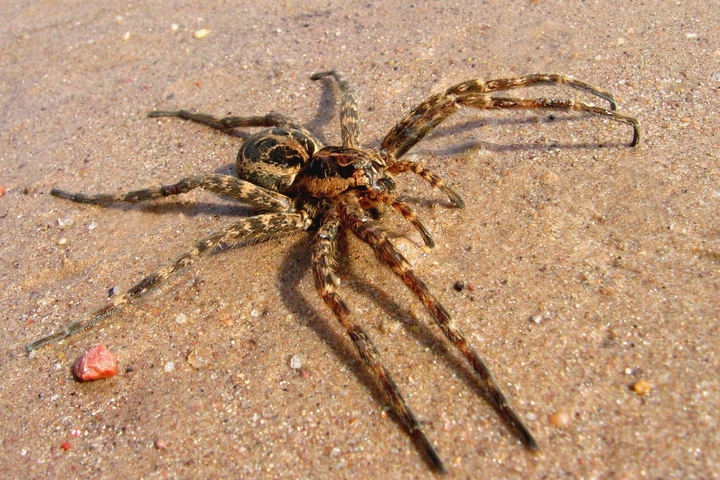
This spider gets its name from its wolf-like hunting habits and is known for its running speed. It actually chases and pounces on its prey. There are about 125 species of this spider in North America, the largest of which has a body length and legs of 2.5 cm.
In most cases, the body of a wolf spider is a hairy dark brown. Although they are not aggressive, they won’t hesitate to bite out of self-defense, and even though their bite is not dangerous, it can cause dizziness and an elevated heart rate in people who are allergic to spider bites.
6. Funnel-web Spiders
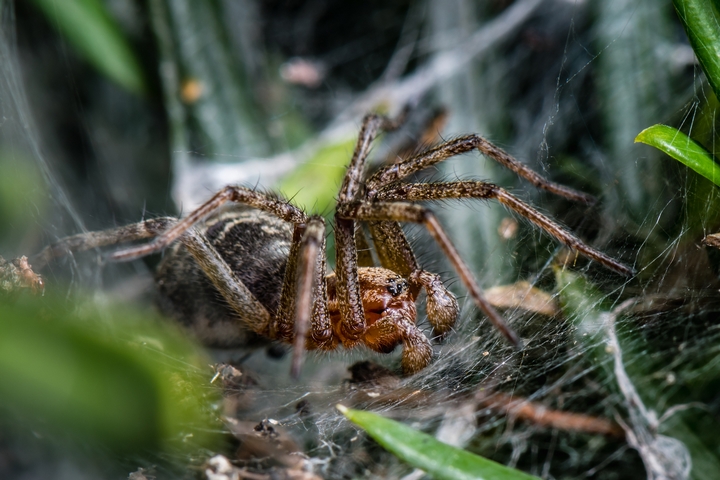
This spider gets its name from its funnel-shaped webs. A funnel-web spider sits inside the narrow funnel as it waits for prey to get trapped at the funnel’s mouth. When this happens, it dashes out to capture it. This bulky brown spider is feared for its venomous bite that in some cases leads to death. The antidote for this venom is only effective when administered to a victim soon after being bitten.
Believe it or not, most spiders will not bite if you do not provoke them.


